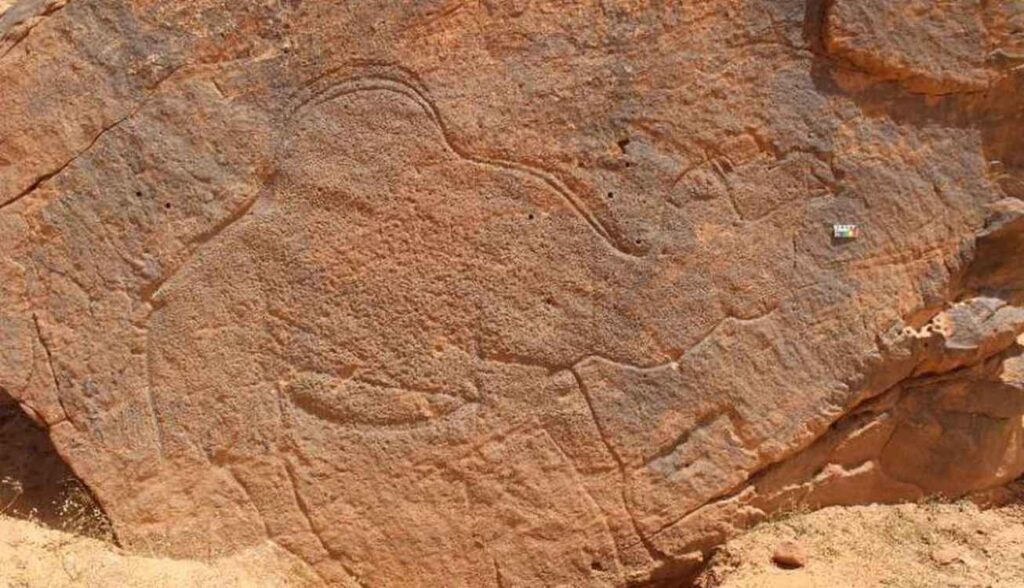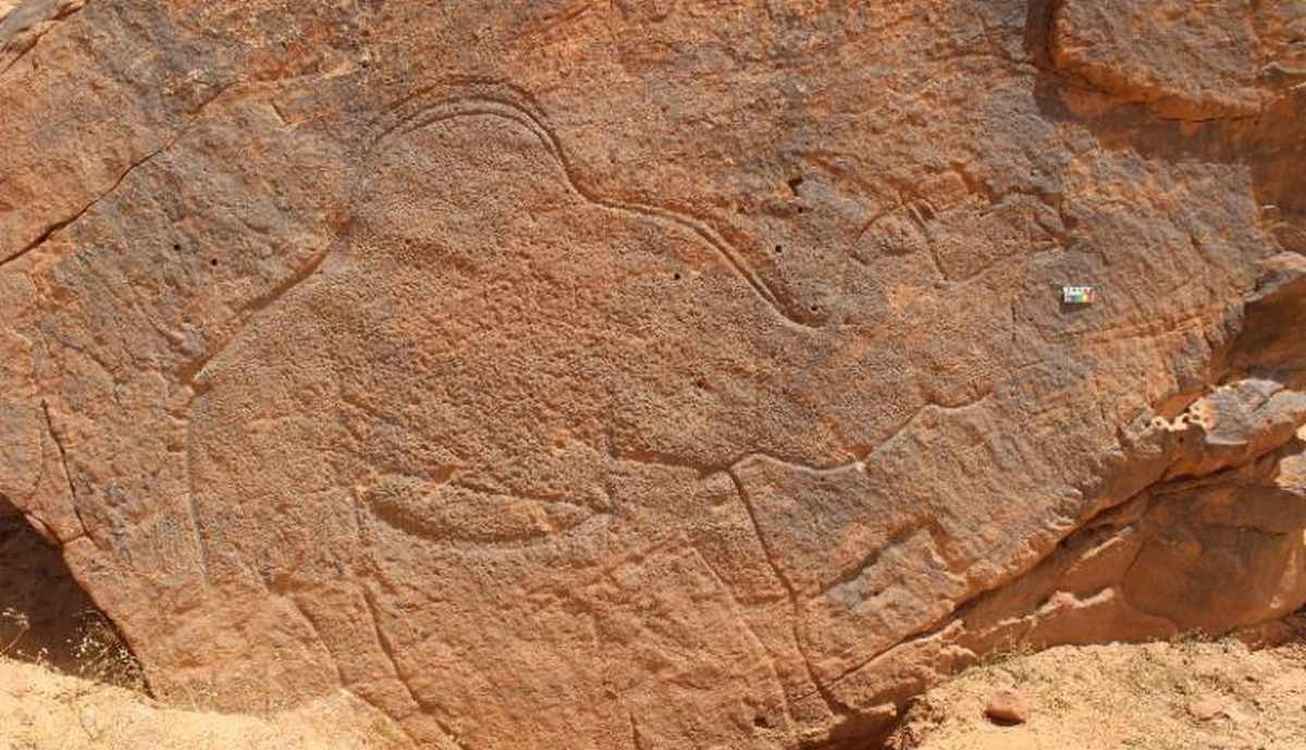 The outline of a camel etched into stone near a seasonal water source – Credit: Sahout Rock Art and Archaeology Project
The outline of a camel etched into stone near a seasonal water source – Credit: Sahout Rock Art and Archaeology Project
12,000-year-old engravings of desert animals like the dromedary camel were used by ancient Arabian tribes to mark where water could be found, a new discovery hypothesizes.
An international team of archaeologists discovered more than 60 rock art panels containing 176 engravings in three previously unexplored areas: Jebel Arnaan, Jebel Mleiha, and Jebel Misma, along the southern edge of the Nefud Desert in northern Saudi Arabia.
The engravings mainly depict camels, ibex, equids, gazelles, and auroch in 130 life-sized and naturalistic figures, some measuring up to three 10 feet long and more than two 6 feet high.
The researchers say the rock art dates to between 12,800 and 11,400 years ago, a period when seasonal water bodies reappeared in the region following extreme aridity.
They explained that the water sources, confirmed through sediment analysis, supported early human expansions into the desert interior and offered opportunities for surviving.
“These large engravings are not just rock art. They were probably statements of presence, access, and cultural identity,” said the lead author of a corresponding paper published on the discovery, Dr. Maria Guagnin from the Max Planck Institute in Germany.
“The carvings would have been significant to the people of the region. Several of the etchings were found carved on top of older ones, indicating that they were maintained and updated over thousands of years.”
Unlike previously known sites where engravings were hidden in crevices, the researchers say the Jebel Mleiha and the Jebel Arnaan panels were etched onto towering cliff faces up to 128 feet high, in “visually commanding” locations. Jebel means mountain or hill in Arabic.
YOU MAY ALSO LIKE: 5,000-year-old Rock Art of Boats and Cattle Unearthed in the Sahara Shows Grassland Came Before Desert
Co-lead author Dr. Ceri Shipton, from University College London said one panel would have required ancient artists to climb and work “precariously” on narrow ledges, underscoring the sheer effort and significance of the imagery.
“The rock art marks water sources and movement routes, possibly signifying territorial rights and intergenerational memory.”
The water source hypothesis is particularly compelling as the camels were depicted as males during the breeding season, which for camels corresponds with the rainy season. It seems a very deliberate detail for these ancient Arabians to add.
ROCK ART AROUND THE WORLD: Newly Discovered Rock Art Panels Depict How Ancient Ancestors Envisioned Creation and Adapted to Change
The research team say their findings, published in the journal Nature Communications and part of the Green Arabia project, highlight the pioneering role of human groups who lived in the interior of northern Arabia shortly after the hyper-arid conditions of the Last Glacial Maximum.
“This unique form of symbolic expression belongs to a distinct cultural identity adapted to life in a challenging, arid environment,” said Dr. Faisal Al-Jibreen, from the country’s culture ministry.
SHARE This Story Of Desert Discovery With Your Friends…

